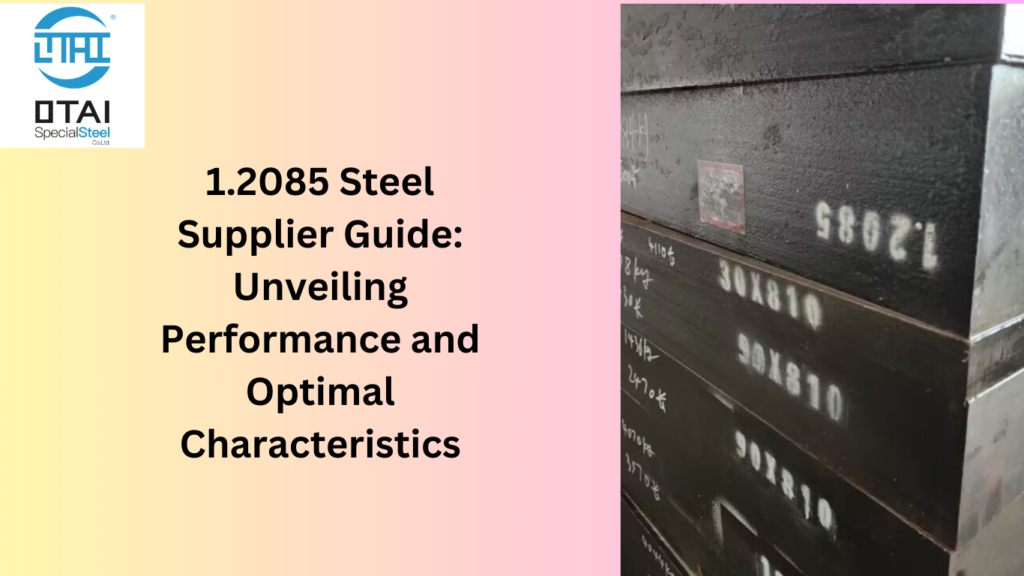The Power of 1.2085 Steel in Your Inventory
Welcome to the world of steel distribution, where strength, reliability, and success converge. As a dedicated steel stockist, we recognize the pivotal role materials play in your operations. In this article, let’s delve into the realm of 1.2085 steel, exploring its exceptional qualities and understanding why partnering with OTAI is the smart choice for wholesalers and distributors.
Unpacking the Resilience of 1.2085 Steel:
1.2085 steel isn’t just a metal; it’s a testament to toughness and dependability. Let’s delve into its characteristics and comprehend why it’s a critical component across various applications.
The OTAI Advantage with 1.2085 Steel:
Mastery in Year-Round Inventory: At OTAI, we don’t just have steel; we manage it with expertise. Our 1.2085 steel is available year-round, in all dimensions. Need swift and precise customization? We have the capabilities to deliver.
Tailored Packaging for Optimal Protection: We understand the significance of the steel’s journey. OTAI offers personalized packaging services, including cable tie packaging, wooden box packaging, and rust-proof packaging. Your 1.2085 steel doesn’t just arrive; it arrives in optimal condition.
Global Trust: Join the global elite that relies on OTAI for their 1.2085 steel requirements. We’ve supplied to numerous top 500 companies globally, ensuring deliveries that not only meet technical specifications but leave customers highly satisfied.
Real Customer Cases for Enhanced Credibility:
Case 1: Strengthening Automotive Components: A leading automotive manufacturer needed a reliable steel supplier. With OTAI’s 1.2085 steel, they achieved enhanced strength in critical components, contributing to the durability and performance of their vehicles.
Case 2: Precision in Tooling Solutions: A renowned tooling solutions provider sought high-quality steel for their precision tools. OTAI’s 1.2085 steel proved to be the perfect choice, delivering the required toughness and precision, fostering a long-term partnership.
The Power of 1.2085 Steel, 1.2085 steel isn’t just a material; it’s a symbol of toughness. Combine it with OTAI, and you have a dynamic duo ready to tackle any challenge. With constant stock, quick customization, top-notch packaging, and a global reputation, OTAI is your trusted ally in the steel journey. Elevate your business with OTAI’s 1.2085 steel, where toughness meets excellence.
 In the realm of corrosion-resistant martensitic stainless tool steels,
In the realm of corrosion-resistant martensitic stainless tool steels,